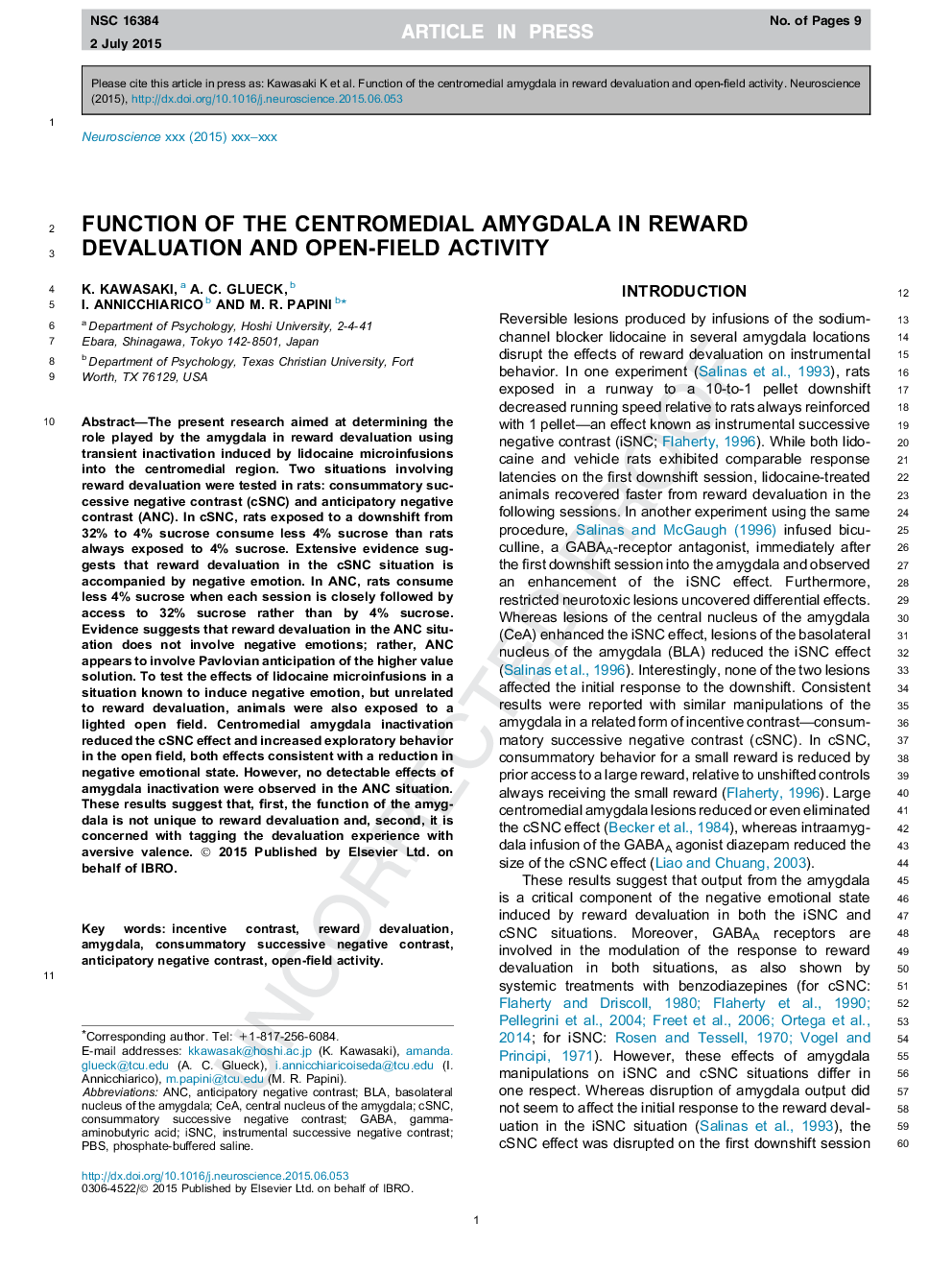| Article ID | Journal | Published Year | Pages | File Type |
|---|---|---|---|---|
| 6271801 | Neuroscience | 2015 | 9 Pages |
Abstract
The present research aimed at determining the role played by the amygdala in reward devaluation using transient inactivation induced by lidocaine microinfusions into the centromedial region. Two situations involving reward devaluation were tested in rats: consummatory successive negative contrast (cSNC) and anticipatory negative contrast (ANC). In cSNC, rats exposed to a downshift from 32% to 4% sucrose consume less 4% sucrose than rats always exposed to 4% sucrose. Extensive evidence suggests that reward devaluation in the cSNC situation is accompanied by negative emotion. In ANC, rats consume less 4% sucrose when each session is closely followed by access to 32% sucrose rather than by 4% sucrose. Evidence suggests that reward devaluation in the ANC situation does not involve negative emotions; rather, ANC appears to involve Pavlovian anticipation of the higher value solution. To test the effects of lidocaine microinfusions in a situation known to induce negative emotion, but unrelated to reward devaluation, animals were also exposed to a lighted open field. Centromedial amygdala inactivation reduced the cSNC effect and increased exploratory behavior in the open field, both effects consistent with a reduction in negative emotional state. However, no detectable effects of amygdala inactivation were observed in the ANC situation. These results suggest that, first, the function of the amygdala is not unique to reward devaluation and, second, it is concerned with tagging the devaluation experience with aversive valence.
Keywords
Related Topics
Life Sciences
Neuroscience
Neuroscience (General)
Authors
K. Kawasaki, A.C. Glueck, I. Annicchiarico, M.R. Papini,
